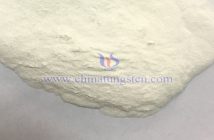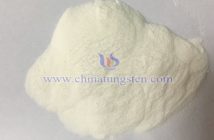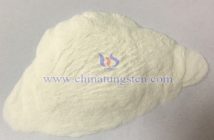The composite of tungsten disulfide (WS?) and graphene is a significant research direction in materials science. By combining the strengths of both materials, a synergistic effect is achieved, endowing the composite with exceptional properties such as enhanced catalytic and electrochemical performance.
Both WS? from CTIA GROUP LTD and graphene are quintessential two-dimensional (2D) materials. Graphene is a 2D carbon nanomaterial composed of carbon atoms arranged in a hexagonal honeycomb lattice via sp2 hybridized orbitals, renowned for its outstanding mechanical and electrical properties. WS?, on the other hand, features a sandwich-like layered structure, with tungsten and sulfur atoms bonded covalently within layers and held together by van der Waals forces between layers. The 2D nature of both materials allows them to integrate seamlessly during composite formation, creating a stable structure that maximizes their synergistic potential.

1. Enhancing Electrical Properties
Formation of Efficient Conductive Networks: Graphene’s high conductivity enables the creation of efficient electron transport pathways within WS?. When combined, electrons can rapidly transfer between graphene and WS?, significantly boosting the overall conductivity of the composite. This enhancement is critical for improving the electrical performance of materials in electronic devices, such as transistors and electrode materials, by reducing resistance, increasing electron mobility, and thereby enhancing device performance and operational speed.
Bandgap Tuning: The interaction between graphene and WS? in the composite alters the bandgap structure of WS?. By controlling the preparation process and the ratio of the two components, the bandgap can be precisely tuned to meet the specific requirements of various electronic devices. For instance, in optoelectronic applications, an optimized bandgap enhances the material’s absorption and emission properties for specific wavelengths of light, improving photoelectric conversion efficiency.
2. Improving Mechanical Properties
Enhanced Mechanical Strength: Graphene, often hailed as the “king of new materials,” possesses exceptional strength and modulus. When combined with WS?, graphene acts like “nanoscale reinforcement bars” distributed between or on the surfaces of WS? layers, effectively preventing interlayer sliding and crack propagation. This significantly enhances the mechanical strength and toughness of the composite. Such reinforcement is highly valuable in producing high-performance composite coatings and films, improving wear resistance, fatigue resistance, and other mechanical properties, thereby extending the material’s service life.
Increased Flexibility: The layered structure of WS? somewhat limits its flexibility, whereas graphene exhibits excellent flexibility. Upon compositing, graphene imparts greater flexibility to WS?, enabling the composite to maintain robust performance under bending or folding conditions. This is particularly crucial for applications in wearable devices and flexible electronics.

3. Boosting Electrochemical Performance
Increased Active Sites: In energy storage and conversion applications, such as lithium-ion batteries and supercapacitors, a material’s electrochemical performance is closely tied to the number of active sites. Graphene’s high specific surface area provides abundant active sites for electrochemical reactions while facilitating thorough contact between the electrolyte and the material. When combined with WS?, their synergistic interaction further increases the number of active sites in the composite, promoting lithium-ion insertion and extraction, and thereby enhancing battery specific capacity and charge-discharge efficiency.
Improved Cycling Stability: WS? tends to undergo volume changes and structural degradation during charge-discharge cycles, compromising its cycling stability. The presence of graphene mitigates these volume changes in WS?, while its excellent conductivity helps maintain the structural integrity of the electrode. This improves the cycling stability of the composite. For example, in lithium-ion batteries, WS?-graphene composite electrodes retain high specific capacity and reliable charge-discharge performance even after multiple cycles, demonstrating promising application potential.



